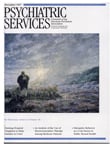Perhaps more than with other aspects of health care or human service, crisis programs are shaped by their environments. The types of services a particular crisis program provides and the way in which it provides them are strongly influenced by the needs and goals of its funding sources and the organization it is a part of, as well as the characteristics of the community in which it is located. Consequently, the landscape of crisis programs is a confusing one. Domestic violence programs, emergency room psychiatric services, volunteer hotlines, mobile intervention teams, and many other types of programs count themselves among the providers of crisis services.
In Creating Excellence in Crisis Care: A Guide to Effective Training and Program Designs, Lee Ann Hoff and Kazimiera Adamowski give an apt description of this current state of affairs and suggest that it argues for the establishment of professional standards in the field of crisis care. The variation among crisis programs partly reflects the fact that these programs are highly responsive to community needs. On the other hand, it can also indicate an unhealthy malleability. Crisis programs can be pushed in the direction of attempting to become all things to all people or shifted toward narrowing their focus in response to a dominant stakeholder and perhaps not providing some services their community really needs. Adding the reality that those who are entering the field from educational institutions often have not had training in crisis care, it is clear that crisis programs are particularly vulnerable to the pushes and pulls of the health care and human service environment.
The authors draw on a growing body of professional literature in the field of crisis care, as well as on their own considerable experience as educators and practitioners, to propose standards for training crisis workers and operating crisis programs. In doing so, they have produced a highly practical book and an extremely valuable resource for anyone responsible for management of a crisis service or education and training related to crisis care.
The authors include a detailed outline of a training curriculum along with specific suggestions about how to implement it. They describe a knowledge base, a set of attitudes, and particular skills, which are applicable to the full range of crisis programs and could serve as a general standard in the field. Equally specific are their proposals for the operation of crisis programs. They offer guidelines about organizational structure, service elements, and program management and evaluation. As with the proposed training curriculum, these guidelines are general enough to be applicable to the broad spectrum of crisis programs, and they are meant to serve as a standard against which programs can measure themselves.
Throughout the book the authors use case examples that illustrate their points wonderfully. They also include a comprehensive bibliography and, true to the spirit of crisis work, a listing of persons and organizations to contact for further information and material.
Creating Excellence in Crisis Care is truly an excellent book. It not only is a fine how-to manual for crisis training and program development, but it also represents a welcome step in the direction of establishing more widely recognized standards in the field of crisis care.

